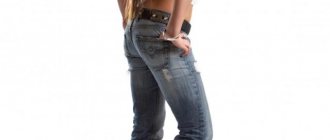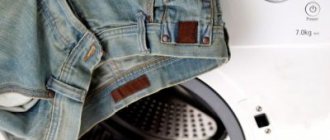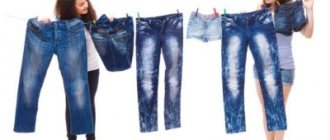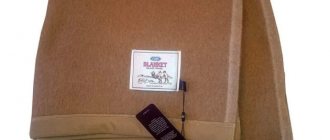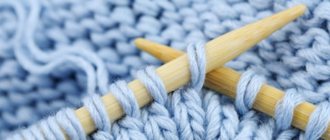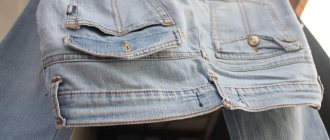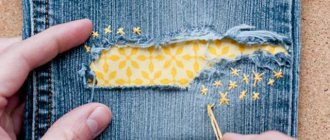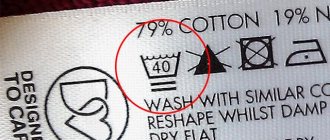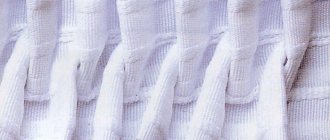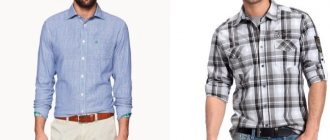Today is the birthday of jeans. 145 years ago, on May 20, 1873, it received a license to produce its stellar invention: trousers with rivets on the pockets. Back then, these durable and practical pants were gray. But the company soon switched to a more attractive and equally durable blue fabric. And since the middle of the 20th century, jeans, which at the beginning were an attribute of gold miners and farmers, have become a fashion trend - clothing that is incredibly popular among men and women of all ages and classes.
These days, jeans are seen as a completely casual item for everyone, from the poor to the millionaire. As a fashionable item of clothing, they have undergone so many changes and acquired so many variations that it is hard to tell. Even someone who seems to have spent half his life in “jeans” also has something to be surprised about when going for something new. Therefore, for the birthday of jeans, MIR 24 has prepared six rules for those who want to buy only high-quality, well-made jeans.
Where to buy
You need to understand that looking for high-quality jeans on the clothing market is almost pointless: if they are found there, it will only be a miracle. Therefore, all the tips that will be discussed below relate to choosing jeans in a store - if not a branded store, then at least one that specializes specifically in denim clothing. And not always from the most famous manufacturers.
Recently, several brands of denim clothing have entered the Russian market, developed by domestic designers and aimed specifically at Russia, but sewn abroad. They outperform well-known competitors in price, without compromising on quality. True, you only need to look for them in chain stores: as a rule, they order such “niche” brands for themselves and do not sell them to anyone for sale.
Textile
The right fabric is the first step in choosing quality jeans. For classic cotton ones, it will be dense and rough to the touch and quite heavy. Jeans should not give the impression of being made from rags, even if they are summer and have very thin fabric.
Photo: @RAKOPTONLPN/PressFoto
After tactile sensations, visual ones come into play.
Good denim has a right-handed twill weave: the diagonal ribs in the fabric run from right to left and from top to bottom. If you come across a herringbone weaving option, even better! It is used less often and on thinner fabrics, which never gives the effect of twisting when worn. By the way, both types of such weaving will be undyed on the inside, unless the fabric is double black or similar (that is, one in which both threads - weft and warp - are initially equally colored).
But a poorly visible weave, an underside dyed to match the outside, and uneven weave of the fabric are signs of low-quality jeans that are best avoided.
Finally, classic denim consists of 100% cotton, although recently elastane has increasingly been added to it - from 2 to 7%. Two percent makes the fabric more wearable and helps prevent blistering at the knees, while seven percent is used when you want to make the fabric have a stretch effect that stretches when put on and fits tightly to the body.
Types of fabric by density
According to the characteristics and coloring, denim fabric is distinguished:
- Denim is a dense and coarse colored material, light on the reverse side;
- Jean (Jean) is a plain fabric with a diagonal design, the most affordable and widespread;
- Cotton is an analogue of gin made from cotton;
- Chambray or chambry is a light and soft fabric, similar in appearance to denim, but denser. Suitable for summer dresses, shirts and shorts;
- Stretch - cotton mixed with elastic lycra fiber. Used for women's tight-fitting trousers because they have good stretch;
- Broken twill is a dense, textured fabric with a characteristic herringbone pattern;
- Denim-silk is a material with smoothness and shine;
- Natural stretch - does not contain synthetic additives, Consists of cotton and Chinese nettle ramie;
- Ecru or eikru is an undyed textile made from cotton raw materials in a pale, gray-yellow tone.
The density of denim is measured in ounces per square yard and ranges from 4-21 units or 135-700 g/m². For sewing clothes, an indicator of 10–14.5 is sufficient, but beyond that the material is already too hard.
Zippers, rivets, label
Fittings, labels, branded stripes - all this can serve as another confirmation of the quality of the product.
High-quality jeans will have exclusively metal fittings - there can be no plastic anywhere near them! The zipper on the fly is only metal, and there is nothing to say about buttons. Even if the manufacturer for some reason decided to use ordinary buttons rather than classic “bolts,” they will be made of metal. And let’s not even talk about the rivets on the pockets.
The labels on good jeans will always be made of fabric, and the inscriptions on them will not be printed, but embroidered. Moreover, this applies to all labels: both internal branded inscriptions and information stripes with information about the manufacturer, fabric composition, washing conditions and everything else.
Photo: @HECKMANNOLEG/PressFoto
But the rule “real jeans can only have a leather label” should be forgotten - they abandoned it long ago. Even the manufacturer of the very first and legendary jeans did this, not to mention his followers. Increasingly, thick leatherette or even thick fabric is used for branded patches. There is only one condition here: all inscriptions on the label must correspond to the logo and be clearly readable. If the patch raises any doubts, it is better to refuse the purchase: the quality of the product may be lower than traditional.
Types by texture
Based on external features and texture, the following types of denim are distinguished:
- Plain - a classic version of a uniformly colored canvas;
- Striped - with woven stripes, subtle or bright, soft and flexible;
- Designer - decorative look with unusual finishing, holes, inserts, embroidery, gold lurex threads;
- Printed – with an original design or ornament;
- Vintage – boiled, bleached, worn or torn jeans;
- Linen - with characteristic nodules and seals on the surface. Contains equal parts cotton and linen;
- Bonding is a fabric combined with a layer of knitwear;
- Denim-silk is a material with a glossy shine;
- Luxury is a fabric of uniform texture without a characteristic diagonal rib, similar to a suit;
- Insulated version on fleece or bike.
- White jeans are a fabric with diagonal weaving and elastane added, dense, heavy and undyed.
Interesting
Jeans trousers made of canvas fabric were first worn by Italian sailors back in 1597.
Size
If the quality of the fabric and accessories is high, you can try on the jeans for yourself. As a rule, we go to the store with a good idea of the desired size of jeans - the treasured ratio of W (waist circumference) and L (length). But it happens that instead of the usual designations, the manufacturer decides to resort to a simple numerical or alphabetic system of sizes - and on the label, instead of W32/L34 (waist circumference - 32 inches, length - 34 inches), simply L or simply 46 suddenly appear on the label. Then it is better not to believe the embroidered take my word for it, but check it out for yourself.
The surest way is fitting. Women are recommended to always try on jeans, men - if the figure is non-standard. You can only buy something without trying it on if you always buy jeans of the same model from a certain manufacturer, and you know for sure that they will fit you.
But many men still take the risk of buying jeans without trying them on. If the figure is standard, then this method will help you determine the size. As a rule, jeans sit exactly at the waist, inside of which, at waist level, when they are buttoned, you can stick your forearm from the elbow to the end of the palm clenched into a fist. The hand fits in - the right size, it dangles or does not fit - more or less than needed. But in order not to get into trouble, it is better to test this method of fitting at home on your favorite jeans and know for sure whether you need to straighten your fist or whether your forearm does not fit into all the jeans you have. Then it’s worth remembering how many centimeters it doesn’t fit – that’s all!
Making sure your jeans are the right length is much easier. If it is indicated in an unusual way, you can simply attach the belt to the waist or hips, depending on the model, and see where the legs end. They should reach almost to the floor, then when put on they will look a couple of centimeters shorter. An even more accurate method is to measure the legs from the crotch, but not everyone will decide to do this, especially in a crowded place.
One last thing regarding size. As a rule, jeans with a waist size chosen according to the formula “minus one inch” look best on a man’s figure. That is, they should be fastened with some effort, but there is no need to pull in your stomach. After trying on jeans, you should try to sit down in them. If they don’t pinch anywhere to the point of pain, don’t cut or squeeze your thighs like a vice, the size is appropriate.
The difference between women's jeans and men's
Perhaps everyone knows what jeans are, but still. Jeans are trousers made of thick cotton fabric, dyed indigo blue, light blue or black. Despite their apparent universality, models for both sexes differ in several ways.
- Position of button or fastener. In men's trousers, it is on the right side and the zipper on the fly is closed with the right hand. In women's jeans the opposite is true. This is due to the fact that ladies dressed with the help of servants and it was more convenient for an assistant to button their jeans.
- There are only 5 belt loops on the waistband of women's trousers. This is enough, because the hips also help to hold the pants. The same cannot be said about the male figure, which requires at least 7 belt loops to secure the belt.
- Women's jeans are narrower at the waist with a pronounced transition to the hips.
- Dimensions. Women's models start with 24 and end with 32 waist size, and men's from 28 to 44.
- The difference is in the cut. When comparing trousers folded in half, you will notice that the crescent-shaped seat line for girls is longer and more curved than for guys.
- Men's jeans are versatile casual wear and more. They have a classic color and go well with other clothing items and shoes.
Cut and silhouette
The squat method is not very suitable if you choose jeans with a “loose” cut, aka tubes. By definition, such jeans will not pinch anything. Squats are the best way to test jeans with a traditional “regular fit” cut, that is, straight along the entire length. You can also try to check the slightly narrowed “slim fit”, or the compromise versions of “relaxed fit” (a little looser than the classic) and “carrot fit” (very narrow at the bottom and wide at the top), but the slim-fit “skinny fit” “It is better not to subject such a test. Although they will most likely cope with it: jeans of this particular cut are made from fabric with the highest elastane content.
Photo: @KECH/PressFoto
However, the appropriate cut, as a rule, is already known to you. But this advice applies more to the case when you want to try something new or need to figure out what the seller brought. But it is not necessary to memorize all the types of cut and silhouette listed above and below - it’s easier to turn your head in search of a poster with their description, which hang in most specialized stores near fitting rooms or product shelves. Another option is to ask the seller to explain what this or that type of cut means, but there is a risk of meeting a beginner who is also not very familiar with these subtleties.
It’s not superfluous to know the three main types of silhouette. It can be “straight”, that is, straight, but in fact slightly tapered at the bottom, “tapered”, that is, noticeably tapering from the knee, and “boot cut”, that is, slightly flared - so much so that even jeans that fit tightly on the hips can be be rolled up to the knee. And it's good to know which of the three fit styles looks best on you. This can be high rise, that is, a high-sitting belt, medium rise, that is, an average fit, and low rise, in which the belt is located in the hip area.
What types of jeans are there?
Jeans are divided into types according to style, color and season. There are classic loose ones and tight-fitting ones, like a second skin. Thin summer and insulated for cold seasons, black, white and blue.
But for our topic, it is more important to separate them according to the material from which they are sewn. Since this is what most influences how long the trousers will last and how to care for them. Is it possible to make the jeans not stretch or to make the jeans shrink?
- High quality denim. Branded jeans are made from it. This is a dense natural cotton fabric with a special weave of two threads. One side is lighter, and the other is noticeably darker.
- Cotton from Mexico, the Caribbean Islands, and Africa is used to produce fibers. It is durable and retains its shape well.
- Shrink to fit. This fabric shrinks only once, during the first wash, and subsequently, no matter how much you boil it, you won’t be able to shrink it.
- Jeans made from Asian or Indian cotton. This fabric comes in different densities and trousers made from it are cheaper than those made from classic American denim. The fabric, which comes from Asia, becomes denser and rougher after washing, but quickly returns to its previous size. Jeans from India are thinner, and the threads have a fleecy feel to the touch. When washed in hot water, they will shrink in all directions, both lengthwise and widthwise.
- Stretch. To achieve elasticity in such jeans, artificial fibers elastane or lycra are added to natural cotton. They can stretch well to fit the figure and immediately return to their previous volume when the trousers are removed. The presence of synthetics in the composition does not allow them to be washed at high temperatures. Regular washing briefly causes them to narrow slightly.
- Summer. These thin fabrics essentially have almost nothing to do with denim. This is natural cotton, only dyed to match classic jeans. It has a regular, not at all dense weave, so it does not have the strength and wear resistance of classic jeans. When washed in hot water, they shrink a lot and never return to their original shape.
How to understand what suits you
Of course, everyone chooses for themselves what kind of jeans to wear, and there can be no universal solutions here. But there are a few basic rules that may be worth remembering.
High rise jeans visually lengthen your legs and shorten your torso, while low rise jeans do the opposite. The “carrot fit” cut option is not suitable if you do not want to emphasize wide hips, and for the same reason you should not choose the “tapered” silhouette. The “boot cut” silhouette is suitable for those with large feet, as it will visually make them smaller, while the “tapered” silhouette, on the contrary, will visually enlarge a small foot. At the same time, for those who prefer massive shoes with thick soles, or even a purely cowboy style, nothing better than “boot cut” can be found, while for lovers of sneakers and similar light shoes with thin soles, it will not suit them.
And one more consideration regarding the features of wearing jeans. The legs of a standing person, which end directly above the shoes, look a little short. So you should only wear jeans with a “slim fit”, “carrot fit” or “skinny fit” cut. In other cases, it is better to choose an option in which the bottom of the trouser leg covers the heel halfway and forms a light accordion in the front. Then, for a sitting person, it will not rise too high, unnecessarily exposing the ankle, and for a standing person, it will not look like it was borrowed from a shorter-legged friend.

